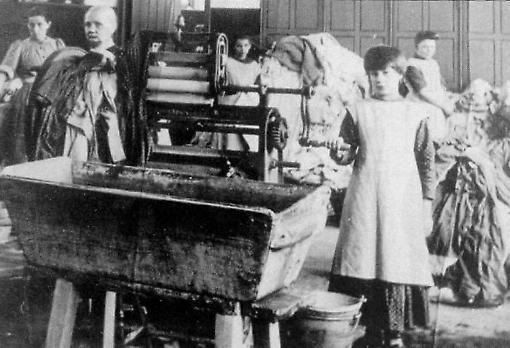Depressing but Not Surprising: How the Magdalene Laundries Got Away with It
By Anna Carey
I loved High Park when I was a kid. The rambling grounds of the convent were just across the road from the quiet Dublin housing estate where I grew up in the 1980s, and every Sunday my family went to Mass in the convent chapel. The chapel was a pretty little Victorian building; when I was very small, I used to jump slowly down the wooden steps of the choir stalls and pretend to be Professor Yaffle from Bagpuss. Away from the cluster of convent buildings, the grounds were beautiful, with meadows full of wild flowers and a small herd of cows. We would go on nature walks, looking out for squirrels and gathering leaves and flowers. It was all rather idyllic, apart from the fact that we were playing in what had, for decades, essentially been a forced labour camp. Run by the Sisters of Our Lady of Charity, High Park Convent was the site of Ireland’s largest Magdalene Laundry. Until well into the twentieth century, girls deemed to be “difficult” – because they were sexually active, or sexually abused, or simply poor – were sent to laundries by their families or the state. Despite having committed no crime, they were not allowed to leave the institutions and were forced to work for no pay, making them literally slaves. Many women spent their entire lives there, remaining long after the actual laundries closed down. They had nowhere else to go. I used to see some of those women at Mass, the ones left behind, although I was almost grown up before I realised who they were. They’d shuffle in behind the nuns and sit quietly at the back. Their eyes were vacant, and they seemed completely institutionalised. I’m sure they weren’t as old as they looked. There was a large, empty building near the chapel which was still referred to as “the laundry”; it wasn’t until my late teens that I realised it was where those dead-eyed women had been forced to slave. The adults around me must have known, but nobody ever talked about it. Then, in 1993, High Park hit the news. The nuns sold some of the grounds to a property developer for IR£1.5m, but the sold land included a mass grave containing the remains of 155 women, many of whom were unnamed. The scandal forced Ireland to confront just what had happened in those laundries, and ask why we’d tolerated them for so long. It didn’t stop shameless religious orders continuing to sell land for vast amounts of money – thanks to further land sales, High Park made €61.7m between 1999 and 2009, and today the former grounds are covered in houses and apartments. But while nuns made millions, former Magdalenes began a long campaign for justice. This year, they finally got results. Following a demand from the UN Committee against Torture (UNCAT) in 2011, a government enquiry into the laundries was established. Released in February this year, the enquiry’s report has been widely criticised by UNCAT among others for being neither independent nor thorough enough. It did, however, officially confirm that not only did the state commit at least 2500 young women to the convents’ “care”, it took advantage of the slave labour, giving the laundries government contracts despite being aware that the institutions were breaking the state’s own labour laws. Taoiseach Enda Kenny offered Magdalene survivors an official state apology, and last month details were announced of a financial compensation scheme. The scheme, which has also been criticised, will cost the state about €58m. You might think, what with the millions they earned from selling land, that the various religious orders would be paying for some of this. But yesterday it was announced that they are refusing to contribute. This is depressing but not surprising, as they’ve repeatedly failed to apologise for running their lucrative labour camps. But that’s the thing about the Irish Catholic church – it never thinks it’s done anything wrong. Its officials always claim mitigating circumstances – things were different in the twentieth century! Nobody thought there was anything wrong with slavery, or raping children! This is nonsense, of course. But when I think of those old women at the back of the church, carefully ignored by the nice middle class families around them, I can see how Irish society allowed the Church to pretend it was true.
|
.
Any original material on these pages is copyright © BishopAccountability.org 2004. Reproduce freely with attribution.
